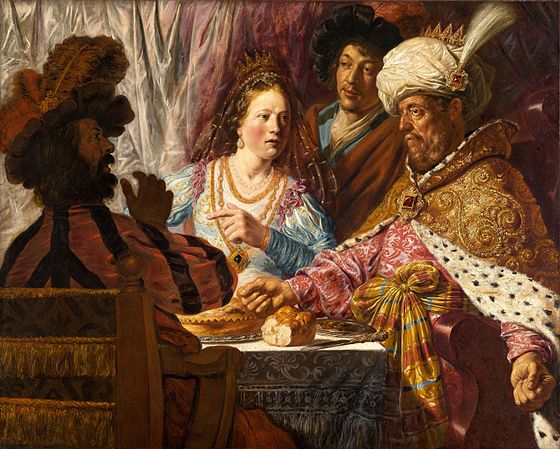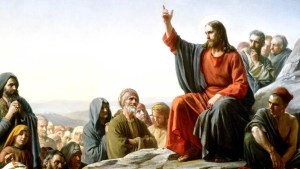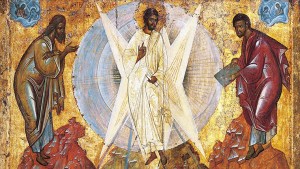Reading the Bible (and properly understanding it, as much as it is actually possible) often proves to be a difficult task. It requires both patience and training. It demands attentiveness to detail, some general knowledge of the contexts in which these texts were written, and the intellectual humility to admit one is more often than not in the wrong. But perhaps, first and foremost, the Bible needs to be read with an adventurous spirit willing to deal with its many “eccentricities.”
Saying the Bible is full of oddities is an understatement. Saying it is a challenging book is right and wrong at the same time. To begin with, the Bible is not a book, but an assemblage of several separate books, most (if not all) of them made from the interweaving of different, sometimes openly contradictory sources. It is also the byproduct of the minute and painstaking work of generations and generations of writers, compilers, and editors. It is a collection of texts written, edited, and codified over millennia.
It is not surprising then that there is not only one Bible. And this is not to say the obvious —namely, that there are a myriad of different translations, some better than others. There are literally different Bibles. Jews have one, Protestant Christians have another, and Orthodox Christians and Roman Catholics have yet another one —the biggest of them all, comprising 73 books in total. The Lutheran canon, in contrast, includes 66 books. Sure, all of these Bibles are intimately related to one another, and often overlap. But they are not the same.
The process of deciding which texts get into the Bible and which do not is called canonization —a term seemingly derived from the canes with which measuring rods were made in antiquity, that passed into Christian usage to mean “norm” or “rule.” The Jewish canon, assembled over the course of centuries, is often referred to as “Tanakh.” The word is an acronym made of the first letters of each of the three main collections included in it: “T” for the Torah (the first five books), “N” for Nevi’im (meaning “prophets,” and including not only the books with prophets’ names as their titles, but also the historical books of Joshua, Judges, Samuel, and Kings), and “K” for Kethuvim (meaning “writings,” which includes more or less everything else).
But Christian Bibles put the books in a different order. Whereas the Tanakh begins with Genesis and finishes with the Book of Esther, Christians reorganized the canon, prioritizing their understanding of those books as seen through the light of Jesus: instead of finishing with Kethuvim, the part of the Christian Bible commonly referred to as the “Old Testament” finishes with the Nevi’im, the prophetic books. This, to highlight the fact that Jesus, who taught “the law and the prophets” was the fulfillment of both —an editorial decision that makes perfect sense for Christians. But why would Hebrew editors of the Bible decide to finish their canon with a (particularly violent) book that does not mention God at all? Why does the Hebrew Bible begin with a book in which God is omnipresent (the book of Genesis) and ends up in one where he is nowhere to be found (Esther)? Actually, how did this book get into the Bible? Some ancient sources suggest the book kind of sneaked into the canon. In fact, its inclusion in it was a matter of debate well into the first centuries of Christianity.
But some authors say God is not necessarily absent. He is just “hiding” in the text.
The book of Esther is witness to how challenging it was being Jewish under a foreign power. Long story short, the book tells the story of Esther, a Hebrew woman in Persia who eventually becomes queen and prevents a genocide against her people —by reversing a slaughter originally intended against them. Scholars agree the book is not historical: it is a fictional construct intended to explain the origins of a Hebrew festival, Purim. But Esther is also about something else.

Sure, the fact that a biblical story never mentions God is indeed striking. As Kristin Swenson explains in A Most Peculiar Book: The Inherent Strangeness of the Bible, “it was troubling enough to the Greek-speaking Jews of the first century that they added episodes and prayers what would beef up the level of piety among its leading characters and also make explicit that God was involved all along. These Greek additions are included in Roman Catholic and Orthodox bibles. In Protestant Christian bibles, they appear only as part of the Apocrypha.” In fact, if you check the Revised Standard Catholic Version of the Bible, you will find the book of Esther is quite oddly numbered: chapter 16, for instance, is included between chapters 8 and 9. Moreover, the book begins with chapters 11 and 12, and only then chapter 1 resumes. These interspersed chapters correspond to these “pious additions” that were already included in the Septuagint. When compiling the Latin Vulgate, Jerome noted these six chapters were not part of the original Hebrew text. He added them at the end of the book. Only much later editions of the Vulgate (the 1969 revised Nova Vulgata, actually) incorporated them directly into the narrative.
So before these pious additions were included, the book did not mention Godat all. In her Introduction to the Old Testament (Hebrew Bible), the noted scholar Christine Hayes compares the book of Esther with other apocalyptic writings —the Book of Daniel in particular. Both books tell the story of a radical existential threat to the Jewish people: the threat of yet another genocide. Daniel commands the people to wait faithfully for God to resolve the crisis. In Esther, peril is entirely dealt with through human action. But is that really the case?
Looking at the original Hebrew might shed some light on this apparent absence. Rabbinical tradition explains that the Tetragrammaton, “YHWH,” is indeed present although in hidden form in different complex acrostics found in the original Hebrew text: either the initial or the last letters of four consecutive words, may it be forwards or backwards, would comprise the Lord’s Name, YHWH —in fact, these letters were distinguished in at least three ancient Hebrew manuscripts in red. The book, then, would show that God is always leading the course of history even (or especially) when we do not seem to notice that is the case. In sum, Esther is meant to be read as a testimony of enduring faith, of daring human action that is ultimately inspired and led by a God that is so intimately involved with the human, that we need to pay attention to seemingly irrelevant details to actually notice Him.



